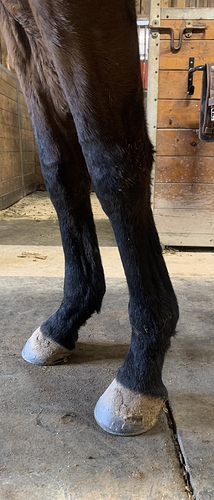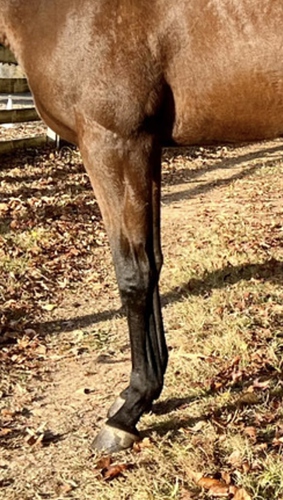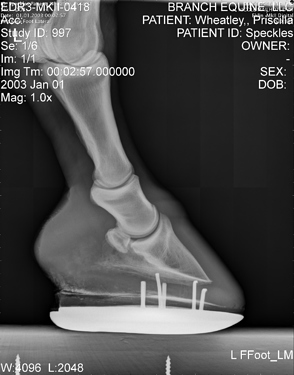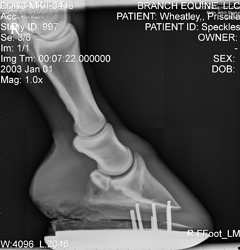I bought my horse in 2001 and had him for 21 years. He had a 2 degree pad and Natural Balance shoes. We switched to Avanti shoes the last few years I had him, which solved his problem with occasional stumbles. He arrived with neglected hooves with long toes. The pad was prescribed by the vet (who retired in 2020 after 50 years in practice). He did an overall exam and x-rays. Our farrier was working on getting his toes and breakover corrected. The angle of the pastern bone should continue in a straight line through the hoof. The x-rays were taken in 12/21. He had a lump on his left knee that I knew would give out due to severe arthritis. I had to put him down in 7/22 when he lost the flexion. I knew I would lose him to the knee; it was a matter of when.
The pasterns look long on your horse, but that is the way he is built. Looking at the left front, the front of the hoof wall is curved and the heel looks low. If you look at each hoof you can see that the angles of the hoof walls are not consistent.
He had lameness evaluation by a specialist at New England Equine Hospital. I had him on a 4-week schedule with the farrier the last year I had him. The vet did x-rays of the fronts every few months so we could monitor the angles. This is the right and left fronts. You can see the angle of the pad between the shoe and the sole. Somewhere I have photos but I can’t find them amongst the zilllions I saved on my PC.
It takes upwards of a year for a hoof to grow out, so you have to be patient and rely on the farrier. If this were my horse I would have the hooves x-rayed so you can see what is going on.
![]()
![]()






